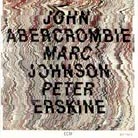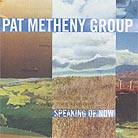 |
|
|
Setting Up, Getting Down
After that lengthy explanation on performance and construction issues, you may be too dazed to even care what changes the Cloud 10 wrought in my rig. But since vibration/resonance control, in my mind, is still one of the blacker audio arts, the more clearly and succinctly a manufacturer can explain his product, the better I say. The Cloud 10 platform has received glowing endorsements by VPI's Harry Weisfeld and Millersound's Bill LeGall, so Vinh must be on to something. But how would it perform in typical, non-scientifically measured conditions? How would it stack up against other brands of isolation platforms? Let's get it on and decided.
Alas, the Cloud 10 platform can be tricky to set up. If your rack is not perfectly leveled, there is a chance that the four balls, though set in small dimples, will create a rolling motion, more likely as the weight of the component increases. Vinh offered a few setup points:
"It is best to disconnect the unit and take it off the rack shelf before installing the platform. If you can enlist the help of a friend, the task of setup is far easier. One person lifts the component while the other slides the complete platform (top and bottom plates with the balls set up inside) under the unit. Once the unit sits squarely on the platform, lift the edges of the top plate slightly to allow the balls to settle squarely in the dimples, then re-seat the top plate. You can do this without unplugging the unit and be done in 10 seconds flat."
Running a solo ship, I fired up my Rega P2 turntable/Grado Prestige Gold cart and slid the Cloud 10 under the unit. The P2 weighs little so setup was a breeze. My current isolation scheme for the Rega is a heavy butcher block cutting board sitting atop three Mapleshade Surefoot Conepoints. I use the Mapleshade Maple Platforms, Isoblocks and Conepoints under my preamp and CD player, so you might say I am a fan of their system. It has bettered options offered by Townshend Seismic Sinks, Symposium and Neaunce shelves, various pucks, pads and even Walker Audio brass cone feet.
|
|
|
Before I discuss the Cloud 10 effect under my turntable, let me describe my current analog sound using guitarist John Abercrombie's self- titled 1989 ECM release with drummer Peter Erskine and bassist Marc Johnson [ECM 1390]. As with most ECM albums, this is a wonderful sounding recording, with cymbals pristinely delineated and bass delivered in a round, forceful and weighty manner. Spinning Peter Erskine's "Drum Solo", the sound is fat and perhaps overly ripe, with extended bass notes exuding a plump quality. Clarity and definition is good but perhaps not the last word in extension or focus. The sound is tilted toward the midrange and bass, with the top end nonetheless engaging, clean and exciting. Soundstaging is broad and deep, the overall sound very dynamic though I am sure there are many turntables that would demolish the P2 in almost every regard. Still, my analog house sound is immediate, involving and very enjoyable.
|
|
|
 |
|
|
For vocal performance and a base line reference to "cloudless" sonics, I played a NOS copy of Frank Sinatra's Softly, I Leave You [Reprise FS-1013], a classic '60s recording with suave strings, pumping brass, winsome background vocals and the arrangements of Nelson Riddle, Billy May, Don Costa and Marty Paich. This LP actually sounded better than the Abercrombie disc, with faster dynamics and more deeply layered and intricate soundstaging. Sinatra's voice was dead-center, large and powerful, particularly on "Emily" and "Here's to the Losers".
|
|
|
|
 |
|
 |
|
Get on the 10th cloud!
It is impossible to deny the sheer physical beauty of the Cloud 10. A little Windex and the platform gleams in the light to surely up the wife or girlfriend factor wherever it is placed. The Cloud 10 is so see-through as to make a component appear to be floating in mid-air.
With analog, the Cloud 10 affected different records in different ways. The Abercrombie disc now became much cleaner sounding, with far greater decay of notes, more top-end air, more realistic dynamics and overall, a less sludgy and more focused sound. Gone was the acoustic bass overhang and boomy bass drum. This was replaced with a long trail of cymbal shimmer and every scintilla of information retrieved from the trio's instrumentation. Everything became more explicit and pronounced but also more refined. Images seemed more stable, with better grip in the bass region both with drums and acoustic bass. The overall soundstage was not as wide nor deep as before, but it was perhaps more accurate and definitely better controlled. The sound was all about focus, clarity and top-end extension. Bass, while more pronounced, was slightly attenuated, however.
The Sinatra LP also sounded much different, now bettered by the Abercrombie for pure fidelity. Again, the sound was all about focus and refinement, with the soundstage again appearing slightly smaller and the bass lacking that feel-good but overly rich wallop that the previous butcher block platform achieved. Sinatra's voice experienced the biggest transformation and for the worse, its more focused and smaller sound securing it mid '60s recording status. With the slight trade off in overall warmth came cubits of extra information that was simply marred before, from bongo parts to individual string and percussion notes.
|
|
How would the Cloud 10 fare on digital?
I used two discs for evaluating the Cloud 10's digital hijinx; Pat Metheny Group's Speaking of Now [Warner Bros 4802502), and the new SACD reissue of Roxy Music's classic 1982 record, Avalon [Virgin 7243 5 83871 24]. The Cloud 10 pulled off a similar trick here as with analog, but the results were more pronounced in every way. The Cloud 10 enabled me to hear deeper into the Metheny CD, with every wire snare vibration, bass slide and piano trill highlighted in incredible relief. There was more air, greater decay of notes and more bass guitar spread than when the Krell sat on the Mapleshade platform with Surefoot Conepoints and Isoblocks. The Krell leans toward an airy and extended presentation in the treble. The Cloud 10 merely highlighted this effect with a shimmering, crystalline quality that is best described by what one of my former Soundstage! editor Marc Mickelson's reviews termed "light-filled". But along with the Cloud 10's airy sonic display came a certain etherealness that was less than natural. Instruments had great punch and snap -- I guess we were getting into PRAT territory here -- but the overall presentation was not as dark or earthy as I am used to hearing; or perhaps prefer. In terms of detail retrieval and soundstage spread, however, the Cloud 10 was an instant genie in the bottle.
|
|
|
|
 |
|
|
Playing the Roxy Music disc -- which sounds better than ever and easily rates as one of the finest SACD remasters I have yet heard -- the Cloud 10 again knocked me for a loop. Part of the effect was due no doubt to the incredible remastering job, but the Cloud 10 enabled considerable propulsion and fantastic image solidity. Again, the sound was all about air, air, air - extension in every meaning of the word. I almost felt like I was in the studio listening to the master tape. Moving the Krell back to the Mapleshade did not lessen this feeling of witnessing a master tape playback, but the sound became earthier, fatter and slightly deeper. But the trade off or loss occurred in the areas of soundstage detail and a general lessening of aliveness. The Mapleshade offered a deader, deeper , more damped and perhaps more human sound; but the Cloud 10 lit up the room with a giant soundstage, extended, gripping bass and enough treble detail to choke a horse. "Light-filled" really says it all.
|
|
 |
|
The human quality was highlighted to a greater extent when playing the Metheny disc through the Krell placed on the Mapleshade platform. Piano, bass drum and bass lacked the visceral impact and sparkle of the Cloud 10, but they sounded somehow more fully formed. There was nowhere near as much low-level detail but images were more solid, complete with heads, arms, toes and fingers (though you could argue the Cloud 10 revealed the dirty fingernails).
|
|
 |
|
The Gingko Audio Cloud 10 vibration control platform is a giant killer in every sense of the word. It created hitherto unheard detail and slam in my system, treating me to a firework's display of audio exhilaration. Its ability to add sparkle and sheen as well as low-end bite were a revelation. What it lacked in soul it made up for in simple honesty by revving up my audio engines' energy. And with the ability to modify its sound with differently sized and weighted balls, the Cloud 10 is, indeed, a tweaker's dream.
|
|
|
|
|
|
|
|
 |
|
Gingko Audio responds:
"We at Gingko Audio are grateful to Ken Micallef for an informative and thoroughly enjoyable review, and to 6moons for giving a newcomer some much-needed exposure in the audio business. Ken completely captures the essence of the Cloud 10 platform, both from a visual and an audio standpoint - it provides a clear window to the music.
His eloquent description of how the music becomes alive and almost surreal is more than we could ask for in our quest to give the Cloud 10 owner the ability to be more connected to the music. We would like to add that the Platformula rack shown in the review incorporates the Cloud 10 as its vibration control element. Also, many of our customers have reported that the Cloud 10 works equally well under video components such as satellite/cable boxes, DVD players and front projectors.
Lastly, please do not use Windex or other household cleaners on the Cloud 10 or any other acrylic material. We recommend a good acrylic polisher like one made by Novus to preserve the long lasting beauty of the material. (I am told that you can get it at a Harley Davidson store - so if you can't afford the bike, at least you can buy the plastic cleaner.)
|
|
Again, thank you for a wonderful review."
Vinh Vu
President and Chief Designer
Gingko Audio"
|
|
|
 |
|
|
|
 |
|
 |
|
|
|
|
|
|
|
|
|
|
|
|
|
|
|
|
|









